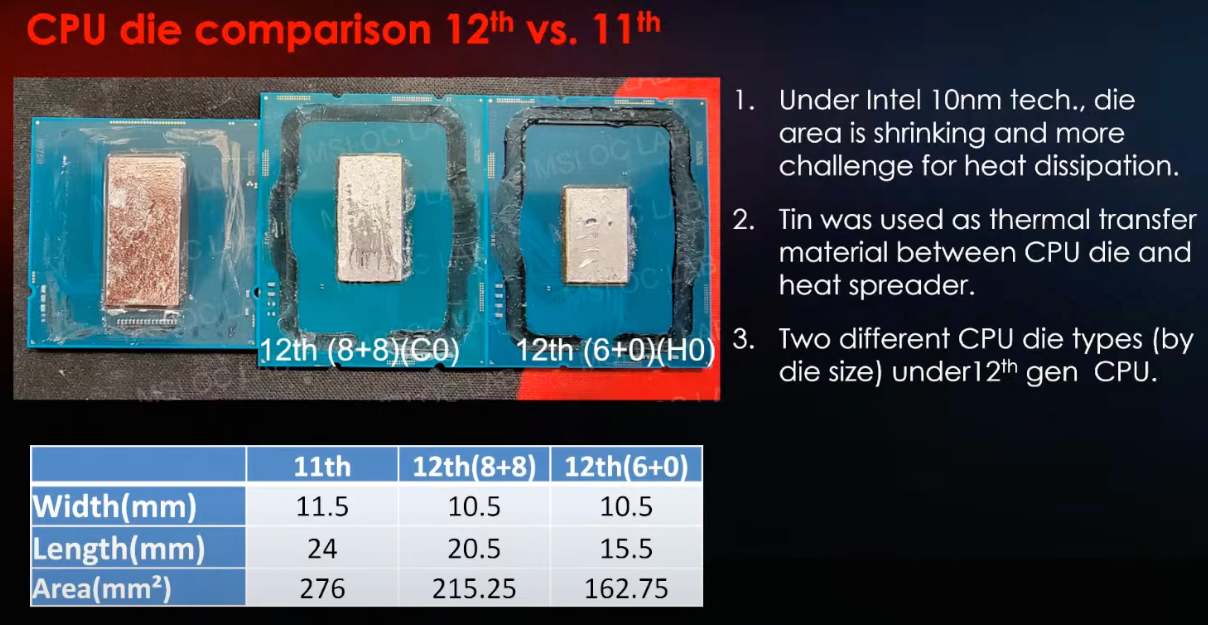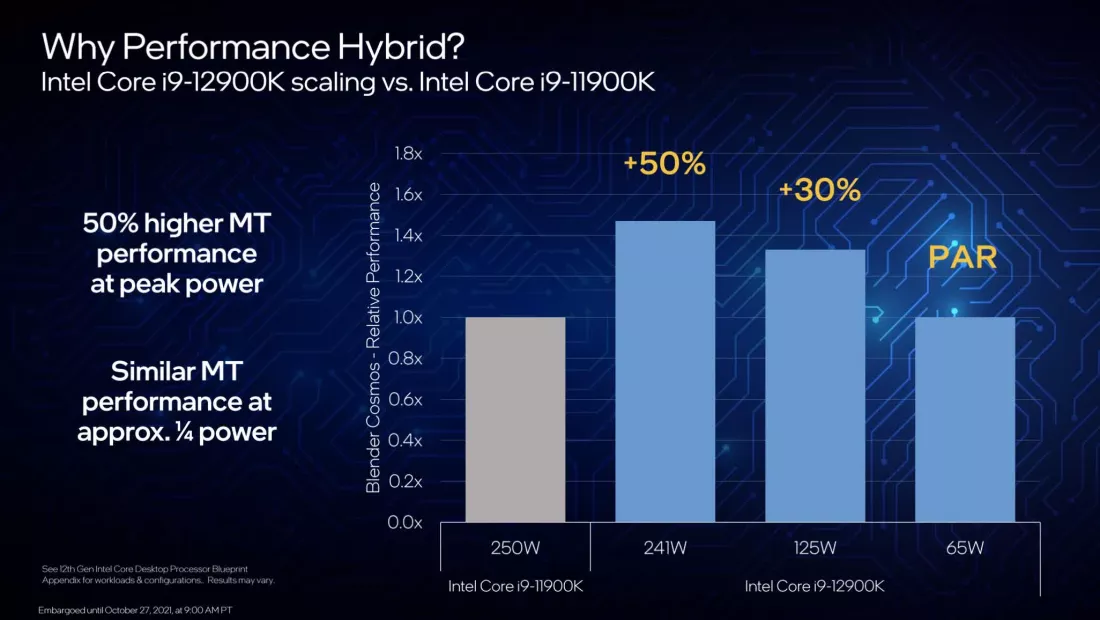Intel readies six-core Alder Lake silicon for midrange and entry level CPUs.
Intel's Desktop Alder Lake CPUs to Use Two Types of Dies : Read more
Intel's Desktop Alder Lake CPUs to Use Two Types of Dies : Read more
New PCIe 5.0 LanesNew CPU scheduler
New programming tools
New coolers
I really hope these are as good as the trouble they bring.
Wrong topic, except for the new cooler, this topic is about lower end alder that won't have any e cores so business as usual new gen.New CPU scheduler
New programming tools
New coolers
I really hope these are as good as the trouble they bring.
Different Coolers Required
The Alder Lake-S die with six performance cores will be considerably smaller than the Alder Lake-S die with 16 cores, and therefore its heat spot will have a different location. Therefore, engineers from MSI suggest that enthusiasts who plan to use those Alder Lake 6P CPUs will have to choose their cooling system appropriately.
PCIe5, no GFX on the horizon to take advantage, nor NVMe drivesNew PCIe 5.0 Lanes
New DDR5 RAM Interface
New Chipset to go along with CPU
Tin is almost always used as an alloy (typically with copper or lead [although lead is discouraged these days). Indium is also used almost exclusively as an alloy.AMD Ryzen had their "What thermal paste application technique was best" test, now Intel will have their "What orientation of your cooler is best"...
Also...Was Intel really using TIN? Tin has 2-3x less thermal conductivity as the Indium solder AMD uses in Ryzen...

Tin is almost always used as an alloy (typically with copper or lead [although lead is discouraged these days). Indium is also used almost exclusively as an alloy.
Tin (by itself) has thermal conductivity of 66.8 W/(m⋅K).
Indium has thermal conductivity of 81.8 W/(m⋅K).
Copper has thermal conductivity of 401 W/(m⋅K).
Comparing elemental tin and elemental indium doesn't tell us anything since these solders are alloys. We'd have to examine the alloy's thermal conductivity to reach any conclusions. I mean, hey, at least they are using solder TIM and not the paste they were using a few years back! 😉
New PCIe 5.0 Lanes
New DDR5 RAM Interface
New Chipset to go along with CPU
Still the same single ringbus, no infinty fabric connecting the different cores, no latency issues.So its okay for intel to glue together mismatched cores, just not symmetrical cores cuz... Reasons?
What are covert channels?Security, in particular, the added covert channels in the new scheduler are going to cause huge headaches for no gain in AMD CPUs and the Alder Lake SKUs with no E-cores or all E-cores.
So you wonder how much power the ecores will draw but you are already sure that they will draw more than AMD...And finally, calling the E-cores efficiency cores, when they draw considerably more power than comparable AMD chips. In fact, my son's apartment building burned down--he wasn't home, and it started in the basement anyway. We put a new motherboard, AMD 5700G CPU, and DRAM in my old case. At 65 Watts--actually 63 point something when running benchmarks that stress both CPU and included GPU. I wonder how it will compare to an i9 12900 with the P-cores disabled or at idle and see how much power the E-cores draw when loaded.


